DIY chopping board: manufacturing methods

A cutting board is an important attribute in the kitchen of every housewife. It would seem that choosing a board is not difficult, but when it comes to purchasing, everything is not so simple: the models presented on the market may either not fit into the interior, or are too large (small) in size, or the material does not inspire confidence.
Plastic boards are very popular due to their varied colors and attractive prices, but lately there has been talk about the dangers of plastic in contact with food, and many are confused... Of course, no one has any questions about natural materials, but it is not always possible to find just such a board that would meet all the requirements of the hostess. There is a way out - to make a cutting board with your own hands! It is enough to stock up on wood, the necessary drawings and some knowledge, and your kitchen will show off a magnificent homemade board!
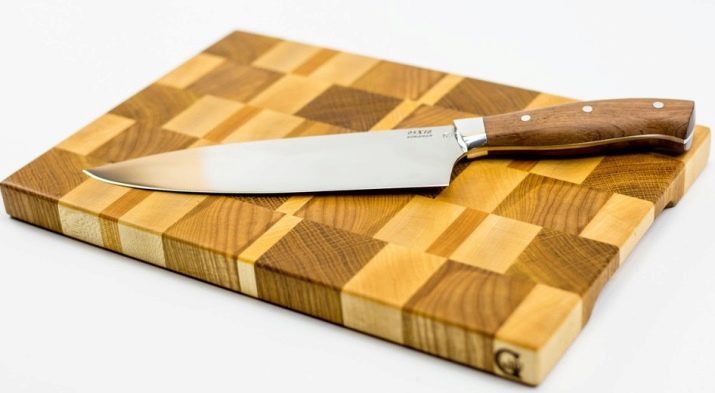
Step 1. Selection of materials
What is a board for?
If you have little or no experience with wood, the first point that will need to be clarified right away is the choice of tree species for your future cutting board.
First you need to figure out - how exactly will you use the board? For fruit? Fishes? Meat? Salads? It is recommended to have separate boards for different products. Since both the length and the thickness are completely different - both for practical reasons and for culinary reasons.
So, for meat, you need to have a dense massive board, because, for example, you will have to use an ax if you plan to cook a steak, and a thin board will deteriorate after a couple of uses. Thinner wood is suitable for cutting fish, since only a knife will be used.
The board for cutting fruits and vegetables will be even thinner.
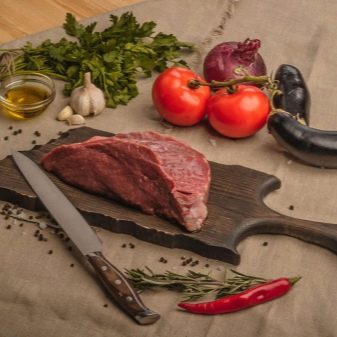

Or maybe you even want to make a board for home decoration? Planks are not always needed for use in cooking - very often they are hand-made decorations to give the interior a more rustic style. If so, then here you just need to focus on the preferences of the appearance as a plan of the artistic project, because then you will simply design the model according to the idea, and the model of multilayer plywood FC or FSF is quite suitable - these are the simplest, most affordable and durable materials.

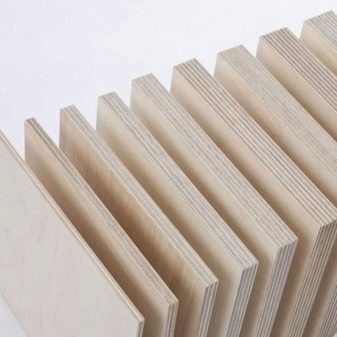
How often will we use it?
If you know that the board will be used several times every day, then you should think about the fact that the strength of the materials is not the last criterion. The board must be able to withstand daily loadsas well as the effects of water when you rinse it after drinking.
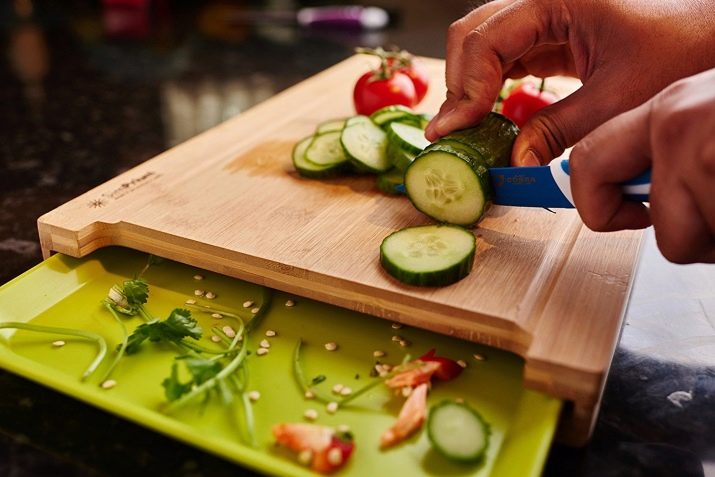
We take into account temperature and humidity
Not everyone is especially important about such points as the impact of temperature changes in the kitchen or excessive humidity. But still, the cutting board is made of wood, and not every breed is suitable for the kitchen conditions - some can swell and crack, and it is impossible to work on a deformed surface. Attractive plywood, for example, is not at all suitable for butchering meat, as constant pressure will cause dents and cracks. Even the most expensive plywood often delaminates. So which wood is best?
Good and inexpensive options from the cut of these breeds:
- Cherry;
- beech;
- Pine;
- oak;
- Birch;
- acacia.
They are excellent to handle and withstand constant exposure without difficulty.
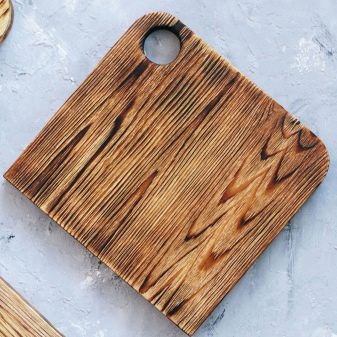
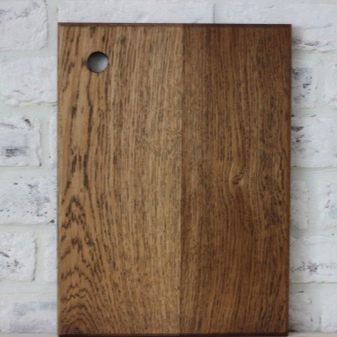
What sizes are needed?
It is imperative to set the parameters to be guided by when making a board. You need to take into account the size that will be most convenient for you for work - only you know which surface shape will be optimal for working with food.
It is clear that the usual logic - for meat and cleaning larger fish, for vegetables and smaller fruits - will also work.
It is also worth thinking about how many people have to cook at a time.
And also it is worth considering the specific dimensions of the kitchen or the place where you will use and store your board. Will a huge board fit in the kitchen? Is it convenient to use it on your desktop?
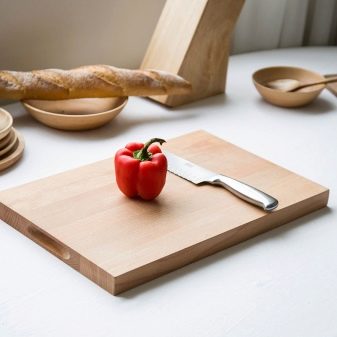

Step 2. We make it ourselves. Operating procedure
The procedure is very simple, and will not cause problems even for the most novice craftsmen. You just need to follow a few simple steps in order, and you will have a beautiful cutting board.
Here is a ready-made handy drawing that takes into account the handle, by which you can hang the board, and take it to transfer the chopped food to the pan or dish.
The handle of the board, so as not to shift the center of gravity, should be along the longitudinal axis of the board.
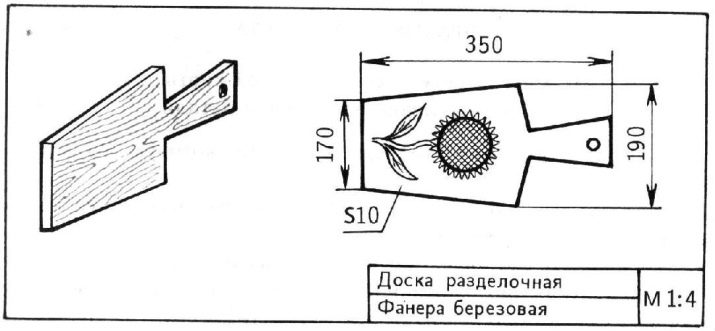
The drawing indicates birch as a material - it is durable, moisture resistant and pliable in processing.
- Cut birch trees (or your choice of wood). To process the template, a regular small-toothed hacksaw will come in handy. This will make it easy to cut off the required tree. Transfer the template to a wooden surface and cut along the lines.
- Edging. Every master of the house probably has some kind of abrasive such as a sharpening cut, skins, or maybe even a special grinding machine that will process the edges of the board professionally. Remember that for safety reasons, it is imperative to grind all the edges of your board so that all burrs and roughness are gone. After a culinary experiment, no one wants to have splinters in every finger, like small chips in chopped food. And visually raw edges look sloppy.
- Drilling a hole. Now you need to make a hole in the handle of the board so that you can hang it on the stud later. The only thing - do not make the hole too small, otherwise it will be difficult to hang the product.You can be creative and make a special clip or glue a hook - the main thing is that the board does not lie on the table, taking up space, but hangs neatly and adds charm to the interior. But how to hang it, you decide.
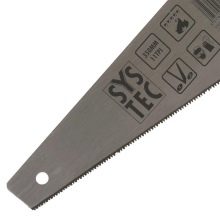
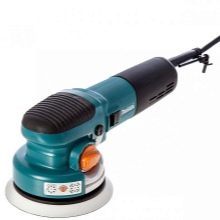
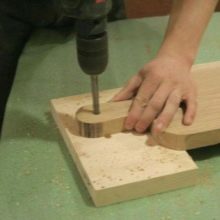
Step 3. Decoration of the product.
Now it all depends on your aesthetic taste. You can decorate the board with an intricate pattern, you can just draw lines or dots, but after that you must definitely cover the board with varnish, otherwise, upon the first contact with water, all the drawings will wash off. Do not limit yourself in imagination, create unique inscriptions and drawings that will cheer you up while cooking.
Pay attention to techniques such as decoupage. You will use one side of the cutting board for its intended purpose, and decorate the other. For decoupage, you need to purchase acrylic paints and gouache of any colors you like (or maybe you already have an idea for which you need specific colors), paper napkins with a pattern, PVA glue, brushes, foam rubber, sandpaper and varnish to cover the surface after how everything is ready - to consolidate the result.

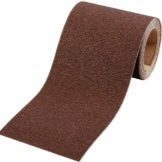
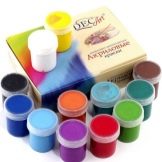
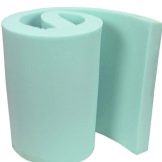
There is nothing complicated in decoupage technique, and an intricate name should not confuse. Simple steps boil down to the following:
- sand the entire surface of the board;
- lay a napkin with a pattern into two parts, cut out the ornament;
- apply acrylic paint to the part where you will place the napkin;
- press the drawing from the napkin to the surface, having moistened it with water;
- then decorate the rest of the surface - paint something with paints, dip the foam in acrylic, for example, gold, decorate the edges - this will give a certain antiquity;
- Finish off the decoration by varnishing the entire painted side of the board. Remember that the varnish should only be applied to the side we were decorating, not the entire board, because cutting on the varnished surface would be ridiculous - the varnish will crumble and all efforts will be in vain.
That's all. Nothing complicated, but what a result! A beautiful kitchen board made especially for you, you and your needs. What could be nicer?
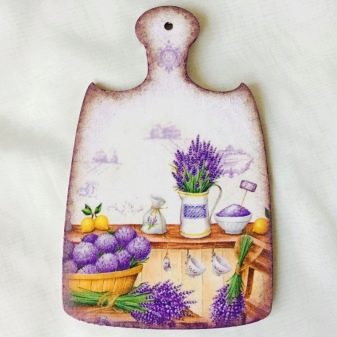

For information on how to make a chopping board with your own hands, see the next video.








